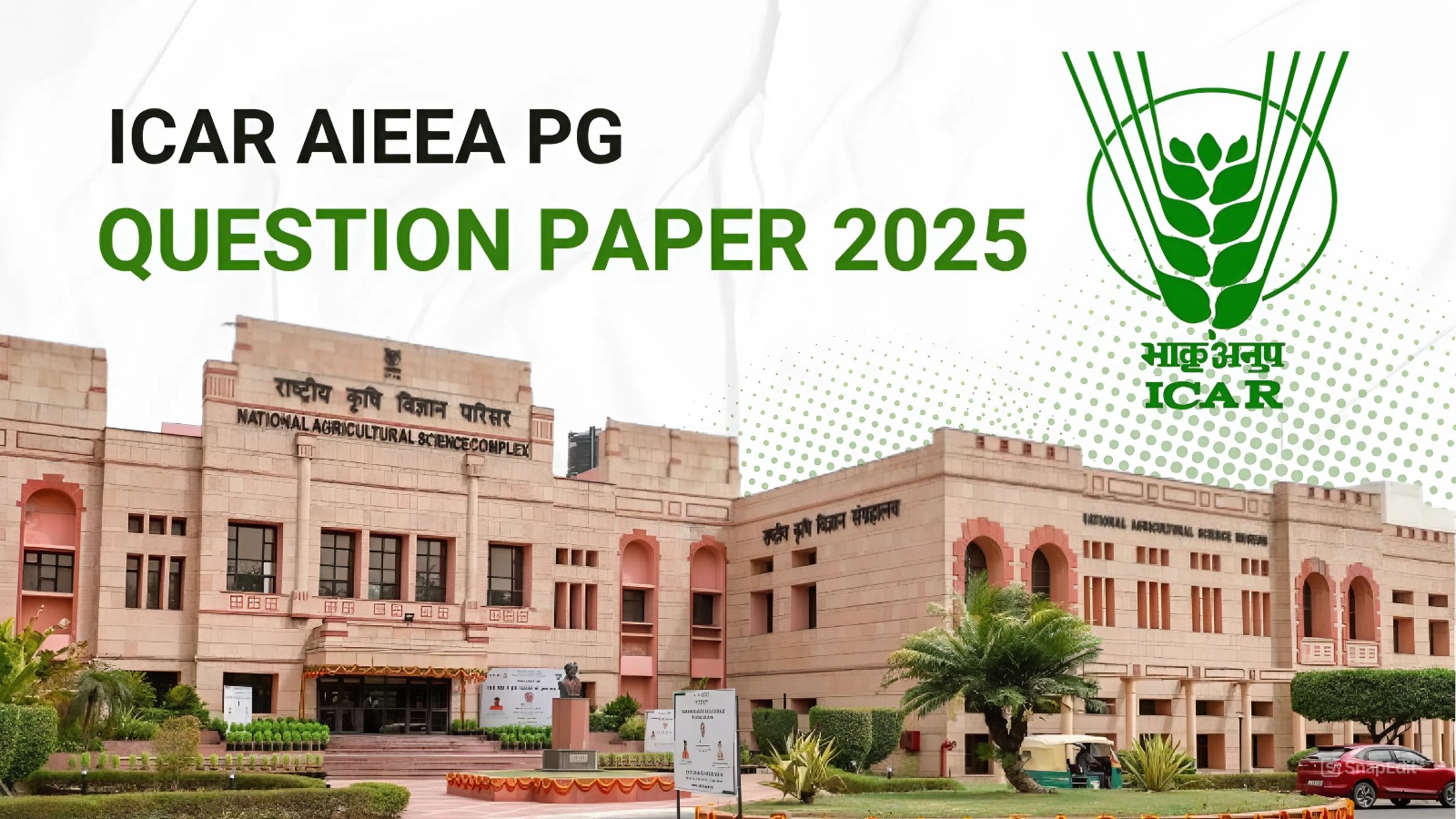The ICAR AIEEA PG 2025 exam was conducted on July 3rd, 2025 from 10:00 A.M. to 12:00 P.M. at various exam centres across India. ICAR AIEEA PG 2025 Question Paper with Answer Key for Animal Science is available here.
The exam evaluates candidates on their subject knowledge, practical understanding, and analytical skills. It consists of MCQ’s from topics related to livestock production, animal nutrition, breeding and genetics, dairy management, and other core areas of animal science.
ICAR AIEEA PG 2025 Question Paper with Answer Key PDF – Memory Based
| ICAR AIEEA PG 2025 Question Paper with Answer Key July 3 | |
| Download PDF | Check Solutions |

Which condition must be met for a population to be in Hardy-Weinberg equilibrium?
Which is an advantage of loose housing for dairy cattle?
What is bypass protein in ruminant nutrition?
Which hormone causes milk letdown in dairy cows?
Which hormone is used in estrus synchronization in cattle?
Which is an example of a molecular marker used in animal breeding?
Which disease is zoonotic?
What is the crude protein (CP) level for broiler starter feed?
ICAR AIEEA PG 2025 Important Topics for Animal Science
Understanding the key topics for Animal Science helps candidates focus on the most important areas for the ICAR AIEEA PG 2025 exam.
| Topic Area | Description |
|---|---|
| Livestock Production & Management | Principles of livestock housing, breeding methods, and management of cattle, sheep, goats, pigs, and poultry. |
| Animal Nutrition | Feed resources, feed formulation, nutrient requirements, ration balancing, and animal feeding practices. |
| Animal Breeding & Genetics | Principles of genetics, breeding techniques, genetic improvement programs, and selection methods. |
| Dairy Management | Milk production, dairy herd management, milking practices, and dairy economics. |
| Animal Physiology | Reproductive physiology, endocrinology, lactation physiology, and stress physiology in animals. |
| Animal Health | Common diseases, prevention and control, vaccination programs, and basic veterinary practices. |






Comments